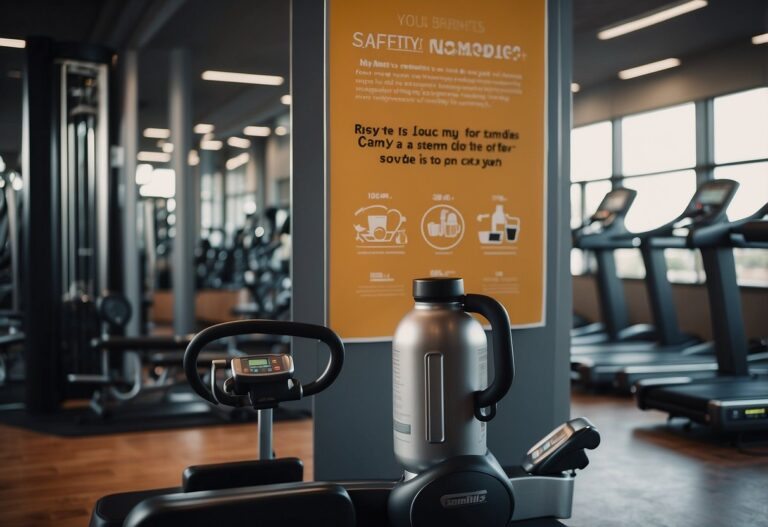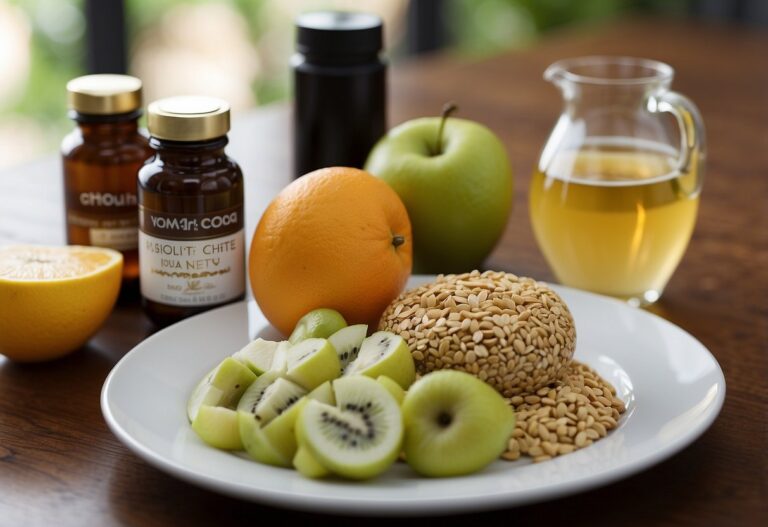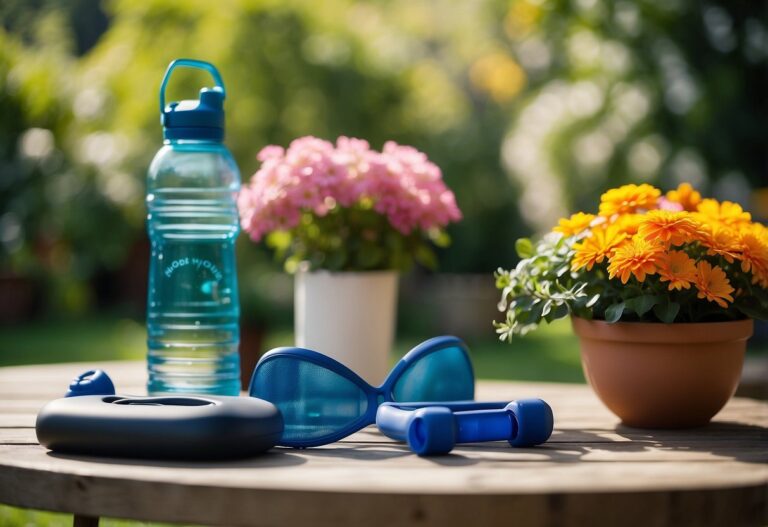Working out alone can be challenging, but it can also be incredibly rewarding. Whether you’re a seasoned athlete or just starting your fitness journey, understanding how to maximise your solo workout sessions can make a big difference. Discover how solo workouts can help you achieve your fitness goals at your own pace and convenience.

Building confidence in your ability to train by yourself is crucial. Knowing what to do and how to do it effectively can eliminate the intimidation factor of working out alone. With the right tips and techniques, you can transform your solo workouts into productive and enjoyable experiences that cater to your specific needs and preferences.
Warm-up with Dynamic Stretches
Dynamic stretches are key to getting your body ready for a workout. They help to increase your heart rate and improve your range of motion.
Leg swings are an excellent choice. Stand on one leg and swing the other back and forth like a pendulum. This stretches your hips and thighs.
Try arm circles too. Extend your arms and make small circles, gradually increasing the size. This helps to warm up your shoulders and arms.
Adding walking lunges to your routine can be beneficial. Take a step forward and lower into a lunge, then repeat with the other leg. This targets your legs and glutes.
Doing a Vinyasa Flow is also effective. This yoga move warms up your upper body and improves flexibility. Check out this guide for detailed instructions.
Using these dynamic stretches will make your solo workouts more effective and enjoyable.
Use resistance bands for strength
Resistance bands are a fantastic tool for solo workouts. They’re easy to use anywhere and extremely versatile.
Stand on the band, keeping your feet shoulder-width apart. Pull the band up so it rests on the back of your arms. This position is great for squats since it mimics holding a barbell.
If you want to train your upper body, try pushing your hands straight out in front of you while resisting the band’s pull. It works your chest and shoulders effectively.
For a lower body exercise, attach a loop band around your waist and anchor it at knee height. Kneel inside the band, shuffle forward, and drive your hips forward. This targets your glutes and thighs.
Adding these movements to your routine can help build strength without needing heavy weights.
Bodyweight Exercises Like Push-ups
Push-ups are a fantastic way to build upper body strength without needing any equipment. They target your chest, shoulders, and triceps. You can start with your knees on the ground if full push-ups are too challenging.
Try progressing to elevated push-ups. Place your feet on a bench and your hands on the floor to increase the difficulty. This move will really engage your core and shoulders.
Plank shoulder taps are another great bodyweight exercise. From a plank position, tap each shoulder with the opposite hand. This move will test your balance and core stability.
For a variation, you can also do tricep dips using a sturdy chair. Place your hands on the edge of the chair, extend your legs out, and lower your body by bending your elbows.
Incorporating these simple yet effective bodyweight exercises can help you build muscle and maintain a strong physique. If you’re interested in other push-up alternatives, you might find this list of 14 Best Push-Up Alternative Exercises helpful.
Incorporate HIIT Sessions
Incorporate High-Intensity Interval Training (HIIT) sessions into your solo workouts to boost results. HIIT involves short bursts of intense exercise followed by rest periods. This can help burn calories and improve cardiovascular health.
Try adding a Cycling HIIT Workout if you enjoy biking. Warm up, then alternate between 30 seconds of intense cycling and 60 seconds of easy pedalling.
Keep your sessions short, around 25-30 minutes once or twice a week, to avoid overtraining. Aim for balance to ensure proper recovery.
Utilise yoga for flexibility
Yoga is a powerful way to improve your flexibility. You don’t need a lot of space or equipment. Just a mat and some comfortable clothes will do.
Start with simple poses like Bound Angle to stretch your hips and chest. Hold this pose for several breaths, feeling your muscles relax and lengthen. Check out these yoga poses to improve flexibility.
Practise standing forward bends to stretch your hamstrings and lower back. Place your hands on your hips and slowly bend forward, reaching towards the floor. This pose can greatly enhance your flexibility.
Regularly include yoga in your routine, and you’ll soon notice a difference.
Track progress with a fitness journal
One helpful way to keep an eye on your solo workout progress is by using a fitness journal. Start by jotting down the date and bodyweight before each workout. This simple step can make a big difference over time.
Note your exercises, sets, reps, and weights. Using a detailed log lets you see improvements and recognise patterns. For a more personal touch, add how you felt during and after the workout, including energy levels and mood.
Having a visual record of your fitness journey can boost your motivation. You’re more likely to stick with it when you see how far you’ve come. Give it a try! For more details, check out James Clear’s tips.
Cool down with static stretches
After finishing your solo workout, it’s important to cool down with some static stretches. This helps your muscles relax and can prevent soreness.
One simple stretch is the quad stretch. From a kneeling position with the tops of your feet flat on the ground, slowly sit back on your legs. Hold for 20-30 seconds.
Another effective move is the hip flexor stretch. Tuck one hip and squeeze your glutes, feeling the stretch in the front of your thigh. Hold for 20-30 seconds, then switch sides.
Consider the erector spinae stretch next. Sit on the ground with your legs extended and reach forward, aiming to touch your toes. Hold for 20-30 seconds.
Explore different stretches like these to find what works best for you.
For more examples and tips, check out the best cool down exercises and stretches.
Stay Hydrated Throughout
Staying hydrated is crucial for any solo workout. Aim to drink water before, during, and after exercise to keep your energy levels up.
Before starting, try to drink around 450 ml of water two hours prior. This preps your body and keeps you from feeling sluggish.
During your workout, sip small amounts regularly. Carrying a water bottle with you can make this easier and more convenient.
After exercising, rehydrate by drinking water or a sports drink. This helps replace fluids lost through sweat and prevents dehydration.
By maintaining good hydration habits, you can enhance your performance and stay healthy.
Mix cardio with strength training
Combining cardio with strength training is a smart way to optimise your workout. Cardio helps improve your heart health and endurance. Strength training builds muscle and increases metabolism.
Have you tried circuit training? It’s a great method where you alternate between cardio and strength exercises. For example, you can perform a strength exercise for 45 seconds, followed by 30 seconds of cardio. Aim to repeat this for three rounds to keep your heart rate up and muscles working.
Another option is doing cardio first, then moving to strength exercises. This can help you warm up well and make your strength session more effective. Mixing both in your routine keeps workouts interesting and targets different fitness aspects. Check out more details here.
Invest in a Quality Yoga Mat

Investing in a quality yoga mat can make a big difference in your solo workouts. A high-quality mat offers better grip, cushioning, and support for your joints. This makes it easier to keep your balance and reduces the risk of injury.
When choosing a mat, consider how often you’ll use it and what kind of exercises you’ll be doing. For example, thicker mats are great for hot yoga or Pilates, providing extra comfort and stability. Make sure to pick a mat that’s durable and easy to clean, so it lasts longer.
Think about the material of the mat as well. Some materials offer better durability or grip, while others might be more eco-friendly. Check out options and choose one that aligns with your values and needs.
By investing in a good-quality mat, you ensure a more enjoyable and effective workout. It might cost more upfront, but it’s an investment in your health and practice. For more details, you can read about why a thick yoga mat could be your best investment.
Benefits of Solo Workouts
Working out alone can provide a range of benefits that contribute to both your mental well-being and the practical aspects of your daily routine. By understanding these advantages, you can make the most of your solo fitness journey.
Mental Health Benefits
Exercising alone offers significant mental health benefits. You get time to yourself to clear your mind and relieve stress. According to Dr Jonathan Bae, working out solo can be meditative. Focusing on your movements and breathing can help you unwind and unplug from daily pressures.
Solo workouts can boost your mood. Physical activity releases endorphins, which are natural mood lifters. When you exercise alone, you can tailor your workout to suit your preferences, whether it’s a relaxing yoga session or a high-energy run. This flexibility can enhance the enjoyment and mental benefits of exercise.
Moreover, choosing to work out alone can help increase your self-discipline and internal motivation. Vital Habits notes that setting your own fitness goals and achieving them independently can build confidence and a sense of accomplishment.
Flexibility and Convenience
One of the most appealing aspects of solo workouts is the flexibility they offer. When you work out alone, you have complete control over your schedule. You can choose the best time for your exercise routine without coordinating with others’ schedules, which is especially useful if you have an unconventional or busy timetable, as highlighted by Hydrow.
Solo workouts also allow you to exercise at your own pace. You don’t need to keep up with a group or slow down for someone else. This means you can focus on your personal progress and tailor your workouts to fit your unique fitness level and goals.
Another convenience is the ability to choose your workout environment. Whether you prefer exercising at home, in a park, or at the gym, you can select a setting that makes you feel comfortable and motivated. This flexibility can make sticking to a regular exercise routine more manageable and enjoyable.
Creating an Effective Solo Workout Plan

Creating a solo workout plan involves setting actionable goals and including a variety of exercises to keep you motivated and challenged. This helps you to stay engaged and make consistent progress.
Setting Achievable Goals
Start with clear, specific goals. Think about what you want to achieve. Maybe you want to build muscle, lose weight, or improve endurance. It’s important to be specific. For example, instead of saying “I want to get fitter,” try “I want to run a 5K in under 30 minutes.” This gives you a measurable target.
Break your goals down into smaller steps. If your goal seems too big, divide it into smaller milestones. For example, if your aim is to lose 10 kg, set smaller targets like losing 1-2 kg a month. This makes your goal more manageable and keeps you motivated as you see progress.
Keep a workout journal. Write down your workouts, measurements, and how you feel after each session. This helps you track progress and stay focused on your goals.
Incorporating Varied Exercises
Mix up your workouts to target different muscle groups and avoid boredom. Try to include exercises that focus on key areas such as quads, hamstrings, glutes, back, chest, and arms. According to Nerd Fitness, it’s helpful to pick one exercise for each big muscle group.
Use different techniques to keep things interesting. For example, drop sets are great for pushing past your usual limits. When you can’t do any more reps, reduce the weight and continue the set for an extra challenge.
Add a mix of cardio and strength training. While strength training helps build muscle, cardio is essential for heart health and burning calories. Aim for at least 150 minutes of moderate aerobic activity or 75 minutes of vigorous activity each week.
Trying new workouts can also be beneficial. Whether it’s unilateral exercises like one-arm dumbbell rows or using machines to isolate muscles, variety keeps your muscles guessing and can prevent plateaus.







